Mark Twain gained national recognition with his 1865 short story ‘The Celebrated Jumping Frog of Calaveras County’. The story is a first person narrative about a traveler in Angels Camp, California. The narrator inquires about his Eastern friend’s friend who was supposedly a one-time resident during the gold rush years. The traveler asks Simon Wheeler, a fat and balding man he finds at the Angel’s Camp Tavern, if he knows of a Reverend Leonidas W. Smiley? Whereupon, Mr. Wheeler traps the narrator in his chair in the corner of the tavern and tells his story of the lucky gambler Jim Smiley who lived in Angels Camp in the winter of ‘49 or the spring of ‘50 and his jumping frog.
Just like I never read The Grapes of Wrath until after I attended the 2012 Salinas Steinbeck Festival, I had not read ‘The Celebrated Jumping Frog of Calaveras County’ until about 15 hours before finding myself on stage at the Calaveras County Fair last Sunday as a frog jockey entrant. My experience on stage when it counted was reminiscent of Jim Smiley’s perplexing frog jump occurrence in Twain’s story. I’ll leave it to readers to read Mark Twain’s jumping frog story and determine for yourself what I mean when I say I am pretty certain I had the longest jump of the day – although length of time for a frog to make a qualifying jump is not the same celebrated measure for a cash prize payout given at the fair for the longest jump measured by distance.
2014 Calaveras County Fair & Jumping Frog Jubilee, 3rd weekend in May – Frogtown, Angels Camp, California.
California’s Gold Country in Calaveras and Tuolumne
I spent this week with a handful of travel writers invited to experience Calaveras and Tuolumne Counties in the gold country of California’s Sierra Nevada foothills. Despite being a California-born guy who lived five years in Davis, California some 60 miles from where gold was discovered in 1848 spurring the gold rush years in California settlement, I have spent very little time in ‘Gold Country’. This past week revealed to me there is so much more than gold fever history to be discovered in the foothills of the Sierra Nevada.
Getting to Angels Camp, Calaveras County, California
Most travelers visiting Calaveras County will be driving from somewhere west, north or south and crossing the San Joaquin Valley. I arrived via Highway 4 from Stockton where I stayed at the Holiday Inn Express Stockton South-Lathrop on a 5,000 points PointBreaks night. That was essentially a room night for $31.50 after getting 500 points back as an IHG Rewards Club Platinum member. And I got some biscuits and gravy for breakfast which somehow eluded me on my week in Georgia and the Carolinas earlier this month.
View from Highway 4 in Calaveras County foothills, a few miles after leaving the cattle range grasslands of Stanislaus County of California’s San Joaquin Valley. The coastal mountain ranges are about 60 miles west with the valley floor mostly flat and agricultural.
Angels Camp, where the Calaveras Visitors Center is located, is a small town of about 4,000 residents at an elevation around 1,400 feet. Calaveras County is rural with a total county population of about 45,000 residents. There are only three stoplights in the county.
Altaville School 1858 (Angels Camp, CA) was built with funds raised from a dance at the Billiard Saloon. The school is one of the oldest in California and was in use until 1950.
I needed to meet my group at Calaveras Visitors Center at 10:30am. Arriving an hour early, I strolled on foot around the small historic town of Angels Camp. Bull frogs are most certainly the town mascot.
Calaveras County Visitor Center, Angels Camp
The story behind Mark Twain’s Jumping Frog of Calaveras County story is he spent 88 days in the Sierra Foothills in a cabin built by prospectors Dick Stoker and Jim Gillis on Jackass Hill in Tuolumne County in the winter of 1863-64. One day he was in Angels Camp Saloon in neighboring Calaveras County when he heard the story told by Ben Coon of a gambler, his frog and buckshot.
Years after leaving the Sierra foothills, Mark Twain wrote a letter to Jim Gillis, the prospector who owned the cabin on Jackass Hill where he stayed.
It makes my heart ache to call to mind some of those days. Still it shouldn’t, for right in the depths of their poverty and their pocket hunting vagabondage lay the germ of my coming good fortune. You remember the one glean of jollity that shot across our dismal sojourn in the rain and mud of Angel’s Camp – I mean that day we sat around the tavern stove and heard that chap tell about the frog and how they filled him with shot. And you remember how we quoted from the yarn and laughed over it, out there on the hillside while you and Stoker panned and washed. I jotted down the story in my notebook that day and I would have been glad to get ten or fifteen dollars for it – I was just that blind. I published that story and it became widely known in America, India, China, England – and the reputation it made for me has paid me thousands and thousands of dollars since.
Samuel Clemons aka Mark Twain, January 20, 1870
Angels Camp (spelled today without an apostrophe) has an old town street with about a dozen old buildings from the 1850s and 1860s.
Historic Angels Hotel in Angels Camp where Mark Twain heard the tale of the jumping frog no longer operates as a hotel, but the building is on the National Register of Historic Places.
The plaque on the front of the building reads,
C.C. Lake erected here a canvas hotel in 1851. It was replaced by a one-story wooden structure, and then by one of stone in 1855, with a second story being added in 1857. Here, Samuel Clemens first heard the yarn, which was later to bring him fame as Mark Twain, author of ‘The Jumping Frog of Calaveras’.
George Angel founded Angels Camp in 1849. The mining camp proved to be one of the richest quartz mining sections of the California Mother Lode. This concentrated seam of quartz gold about 120 miles in length in the Sierra Nevada foothills from Georgetown in El Dorado County to Mormon Bar in Mariposa County covered an area less than five miles in width. Highway 49 is the north-south road connecting historic gold mining towns.
In my photo of Angels Hotel, there are clothes hanging out on the line over the street. This is a feature of historic Angels Camp in tribute to the miners’ wash day before the big dances in town when men wanted their clothing to look and smell its best.
Historic Angels Hotel is now Calaveras Coin & Pawn Shop
On the sidewalk along the two blocks of historic Angels Camp, plaques dating back 85 years commemorate the annual frog jump winners since 1928. I photographed a dozen or more plaques, but missed the current World Record holder Rosie the Ribeter at 21’ 5-3/4” in 1986.
2007 ‘Lisa Can Do’ jumped 21’ 4-1/4” came within two inches of 1986 world record.
The earliest plaque I saw was 1929.
1929 Frog Jump World Record “Hooligan” 4’ 0”.
The way the frog jump is measured these days is probably different compared to the early days. The frog jump distance is three consecutive jumps, measured from the lily pad launch point to the spot where the frog lands after the third jump. The challenge is getting the frog to jump in a straight line. There is a possibility that a frog jumps 7 feet out and then 3 feet sideways and then 7 feet back in the direction of the starting point for a total jump under 2 feet, not 17 feet of covered stage.
Mark Twain holding a frog in a gold mine painted on side of Calaveras Coins building, the old Angels Hotel, Angels Camp, California.
Frogtown, USA
There is some skill and strategy in the frog jump contest. The last day of the fair Sunday finalist winner earns a $750 prize and if there is a world record, an additional $5,000 is awarded. Calaveras Frog Jumping finals are serious business.
Calaveras County Fairgrounds is Frogtown USA on the third weekend of May.
The fairgrounds were not yet crowded on the final day, a sunny Sunday. The bulk of people were not arriving until 3pm for the frog jumping finals and the big event of the day was scheduled for evening with the demolition derby.
Frog Jumping is a campy experience
What I did not know at the time of arrival in Angels Camp is our Calaveras County itinerary scheduled us to be at the Calaveras County Fair on the fourth and final day of frog jumping competition. This tradition has been happening since 1928 when Angels Camp paved its main road. In 1937, the frog jumping event moved to the Calaveras County Fairgrounds.
Frog jumping center stage at Calaveras County fairgrounds.
The procedure is to register for a frog jump by filling out a form and paying the entrance fee. Then, when called to the stage the frog jockey places the frog on the green pad starting position. The final spot where the frog lands after three jumps is the distance measured.
Researchers at Brown University studied the jumping frogs at the Calaveras County Fair in 2013 to determine why the frogs at the fair have the ability to jump seven feet. Laboratory experiments at Brown University rarely resulted in jumps over five feet in distance. All the frogs used in Calaveras County frog jumping are the same species. Apparently the frog jockey behavior of rushing behind the frog with your head like a predator triggers the flight response that results in long jumps.
Smithsonian Magazine published a piece on why the jumps at the Calaveras County fair surpass their frogs’ average jumps in the laboratory. The conclusion is the jockeys are the driving force behind the frog jumping superstars with jumps in the 20 to 21 feet range being near the physiological limit of these bull frogs.
Rosie the Ribeter’s 1986 jump may remain the world record for many more years.
The stage is staffed with official judges to spot and measure the distance jumped and frog catchers to retrieve the frogs. The person in this photo is Bill Proctor, one of the greatest frog jockeys in the history of the Calaveras Fair frog jumping event, earning seven fair wins with his partner Leonard Hall in the decade from 1964 to 1973. Their frog Ripple jumped 19’ 3-1/8” in 1966 as the longest jump of their seven title wins.
PETA Mark Twain Award
To tell the truth, I was wigged out after reading Mark Twain’s ‘The Celebrated jumping Frog of Calaveras County”. The story references dog fighting and cock fighting and a whole lot of imagery I don’t want to visualize. Of interest to me was hearing our fair guide say the Calaveras County frog jumping event is approved by PETA. When searching for verification of PETA’s stance on frog jumping, I learned that Mark Twain was an animal rights activist and PETA actually has a Mark Twain award.
The Frog Spa
Frogs used in the Calaveras County Fair frog jumping competition are caught locally in ponds and maintained in a room behind the stage. There are about 3,000 to 4,000 frogs jumped during the four-day fair. Fair visitors can rent a frog for $10 and enter the frog jumping competition. Rental frogs are kept together in clean containers. Once a frog has participated in the event, the frog is retired unless it jumped well enough to be a potential finalist, in which case it gets special exclusive treatment in the frog spa.
Frog Spa behind the stage at Calaveras County Fair.
After the competition, the frogs are returned to the wild under the guidance of State Fish and Game regulations. In 2003 there was a controversy over whether the eastern bullfrogs commonly used could be permitted to be placed back in the wild as a nonnative species to California, despite having been caught in local ponds. Apparently the frogs in Mark Twain’s time were native California red-legged frogs. The Calaveras Fair organizers received permission from Fish & Game to return wild caught frogs after the fair to the ponds where they were found and the frog jumping competition has continued.
Eastern bullfrog and the accepted way to handle the frog.
Rental frogs are kept in tanks maintained at constant temperature with crickets to eat. Apparently 85 F is a good core body temperature for maximum distance at the time of jumping these frogs.
In addition to the main stage where the serious competition happens, there was a family fun stage for children to jump frogs.
Children were having a fun time at the fair with frogs. The fee to jump on the fun stage was $5 on Thursday and Friday and $7 on Saturday and Sunday.
All in all, the Calaveras County Fair harkens back to when the gathering of town folk and those from away is a fun time and fundraiser time for the county residents.
On our way out of the fairgrounds we passed by the reigning champions from 2013 with the frog jumping trophy and winners’ names dating back to 1928.
The Foothill Froggers, reigning frog jumping champion jockeys from 2013. They were unsuccessful defending their title in 2014.
The fair was a classic in many ways: Queens were crowned, cars careened in the demolition derby and croakers capered during the Frog Jump Finals.
This year, the jump title was won by Casey Nash of Vallecito, a third generation frog jockey and member of the Calaveras Frog Jockeys. Nash’s amphibian, Green Cough, jumped 19 feet, 8 inches.
Nash, a 2012 graduate of Bret Harte High School, is the son of Shana Nash and Mike Nash – the 2006 champion – and the grandson of the late Jerry Heintz, who was a member of the Angels Camp Boosters Club, the Frog Jump’s founding organization.
Calaveras Enterprise – May 20, 2014
Blogger Disclosure: Admission to the Calaveras County Fair and frog jumping entry fee was complimentary as a guest of the Calaveras and Tuolumne County Visitors Associations on a 3-day sponsored trip.
*****
Ric Garrido of Monterey, California is writer and owner of Loyalty Traveler.
Loyalty Traveler shares news and views on hotels, hotel loyalty programs and vacation destinations for frequent guests.
Follow Loyalty Traveler on Twitter and Facebook and RSS feed.



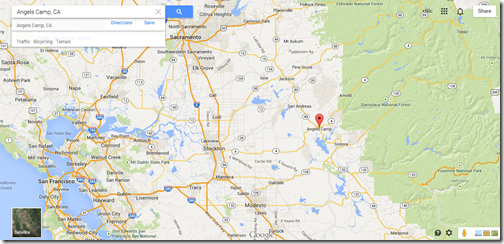
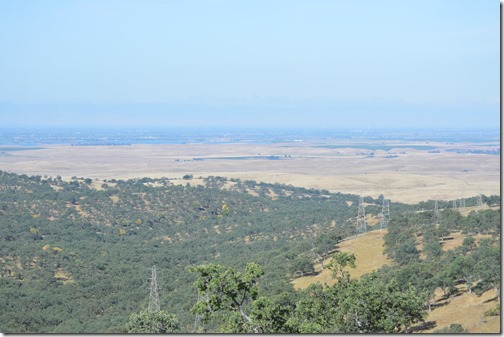



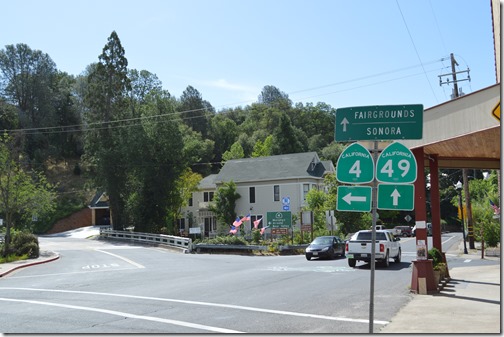
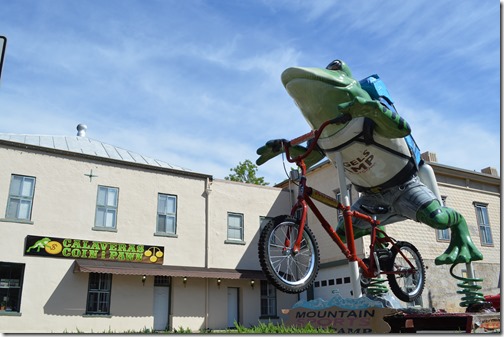
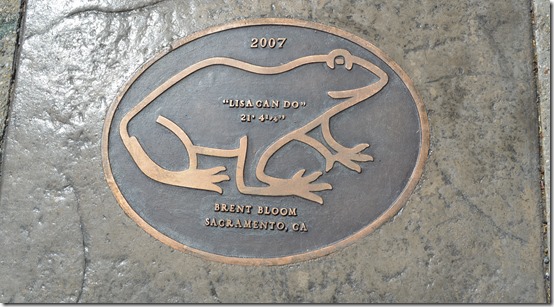
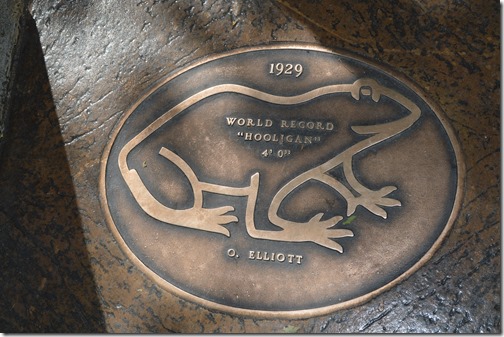
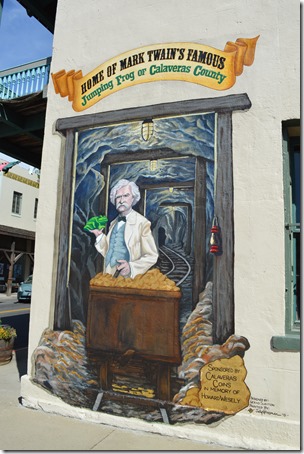
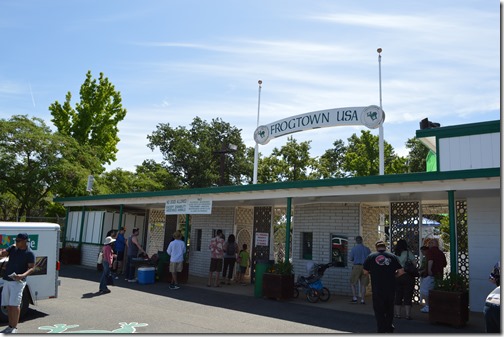
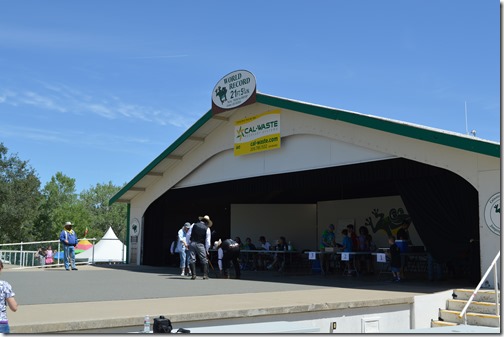
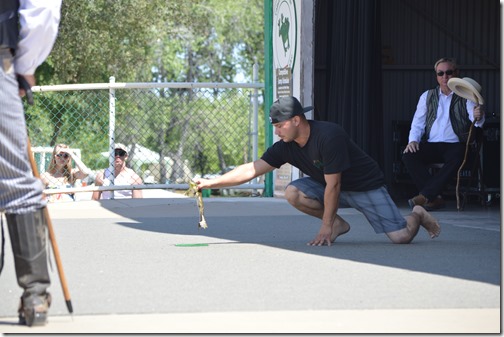
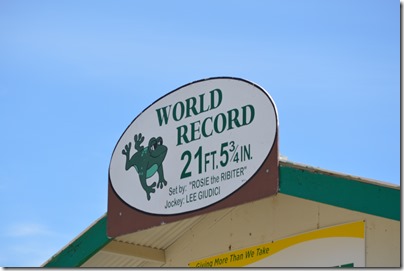
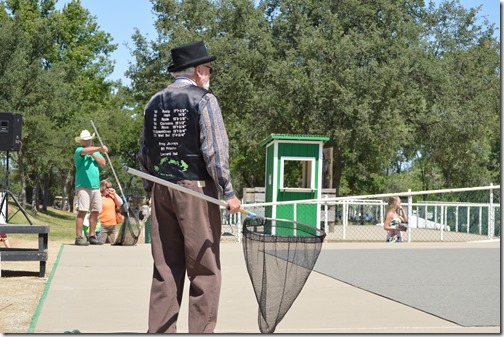
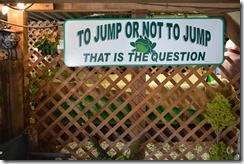

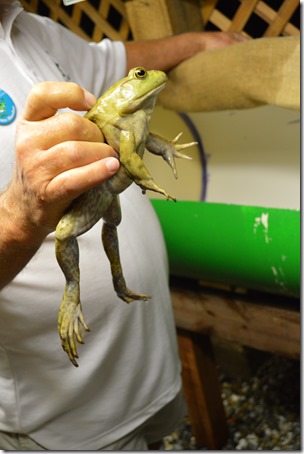

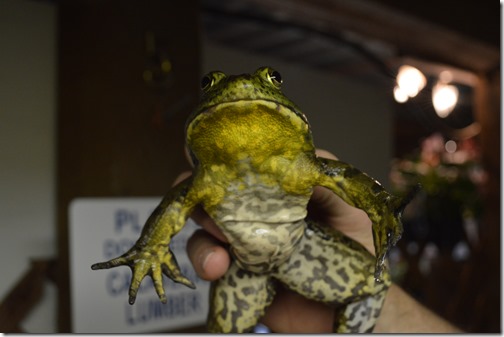
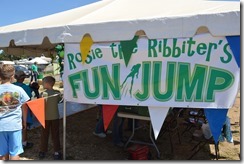
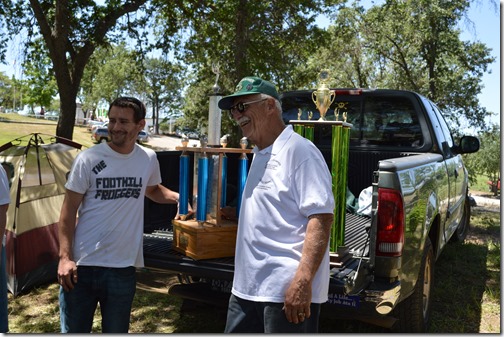
2 Comments
Comments are closed.